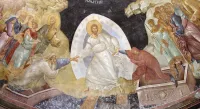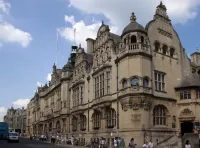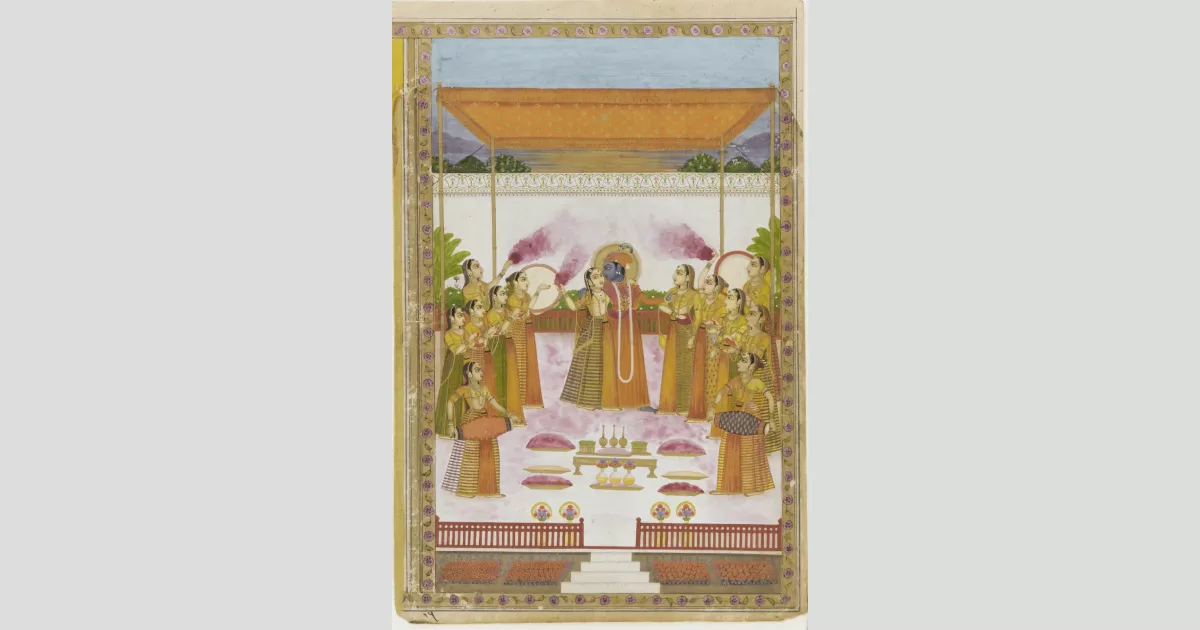Holi is a major Hindu festival known as the "Festival of Colours, Love, and Spring." Primarily celebrated in the Indian subcontinent, it has also spread globally through the Indian diaspora. The festival commemorates the divine love between Radha and Krishna, symbolizing the victory of good over evil, specifically Vishnu's triumph over Hiranyakashipu. Celebrations involve the throwing of colored powders and water, signifying joy, love, and the welcoming of the spring season.
1910: Holi Spelling in Oxford English Dictionary
By 1910, editions of the Oxford English Dictionary recognized "Holi" as the standard spelling of the festival, following earlier variations like Houly, Hooly, Huli, Hohlee, and Hoolee.
1929: Holi-fools Custom in Punjab
In 1929, Bose noted in "Cultural Anthropology: And Other Essays" that the custom of playing Holi-fools was prevalent in Punjab during Holi.
1947: Holi was not a public holiday in Pakistan
From 1947 to 2016, Holi was not a public holiday in Pakistan.
1961: Wrestling matches during Holi in Punjab
In 1961, Bose stated that in some parts of Punjab, Holi is celebrated with wrestling matches.
1993: Holi Fairs in Punjab
Self observed in 1993 that Holi fairs are held in Punjab and may last for several days.
2000: Sekhon's description of Holi celebrations in Punjab
In 2000, Sekhon observed that in Punjab, people begin throwing colors many days before the actual Holi festival.
2007: Study on Malachite Green Eye Irritation
A 2007 study found that malachite green, a synthetic dye used in some Holi colors, caused severe eye irritation in Delhi if eyes were not washed upon exposure.
2009: Study on Metal-Based Industrial Dyes in Holi Colors
In 2009, a study reported that some Holi colors produced and sold in India contained metal-based industrial dyes, leading to skin problems. These colors lacked quality checks and proper labeling.
2017: Sharma's claim on Mughal emperors celebrating Holi
According to Sharma's research in 2017, Mughal emperors celebrated Holi with paintings depicting the celebrations.
Mentioned in this timeline
India officially the Republic of India is a South Asian...

A dictionary is a reference work containing lexemes from one...
Pakistan officially the Islamic Republic of Pakistan is a South...

Diwali also known as Deepavali is a major Hindu festival...

Easter is a Christian holiday celebrating the resurrection of Jesus...

Oxford is a city in Oxfordshire England It serves as...
Trending

Simon Cowell is a prominent English television personality and businessman recognized for his role as a judge on various talent...

7 months ago Gary Payton Reflects on Jordan Matchup and Hypothetical Stats in Today's NBA

11 days ago Spurs Defeat Nuggets in Thrilling Game, Mavericks Face Nuggets

22 days ago Michael Douglas and Catherine Zeta-Jones Celebrate 25 Years of Marriage with Throwbacks
Luke Kornet is an American professional basketball player currently playing for the San Antonio Spurs in the NBA He's a...

6 months ago Jack Black's Minecraft Movie Sets Premiere on HBO Max, June 20, 2025
Popular

Candace Owens is an American conservative political commentator and author...

Ilhan Omar is an American politician currently serving as the...

XXXTentacion born Jahseh Dwayne Ricardo Onfroy was a controversial yet...

Tom Cotton is an American politician and Army veteran currently...
The Kennedy Center Honors are annual awards recognizing individuals and...

Kelsey Grammer is an accomplished American actor producer and singer...
